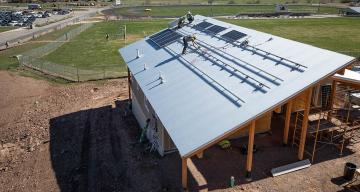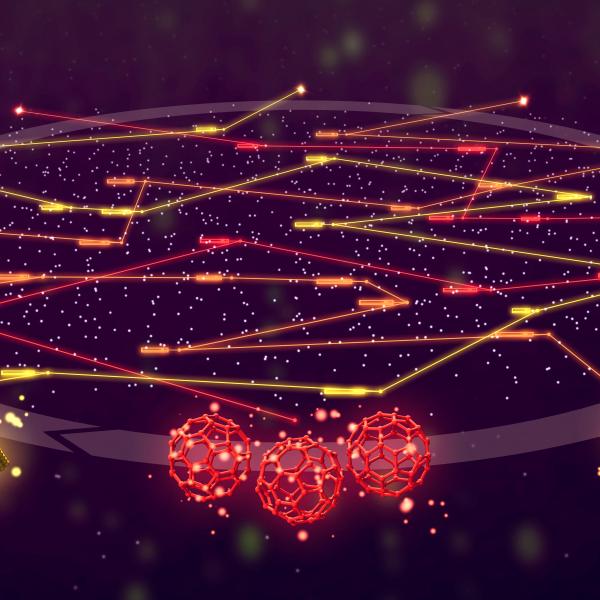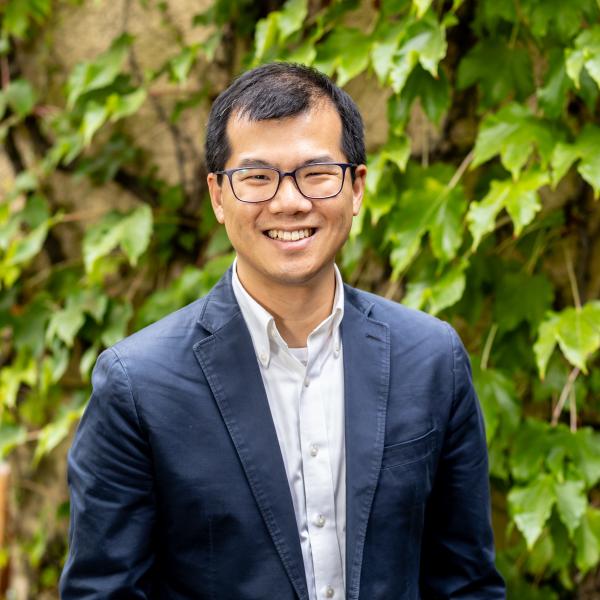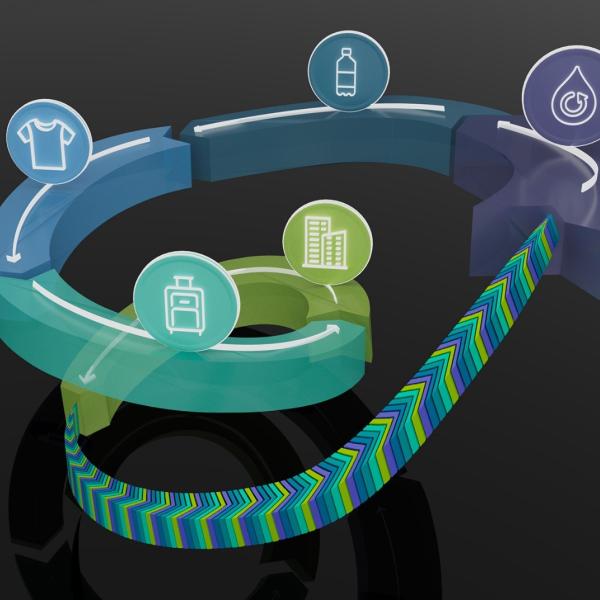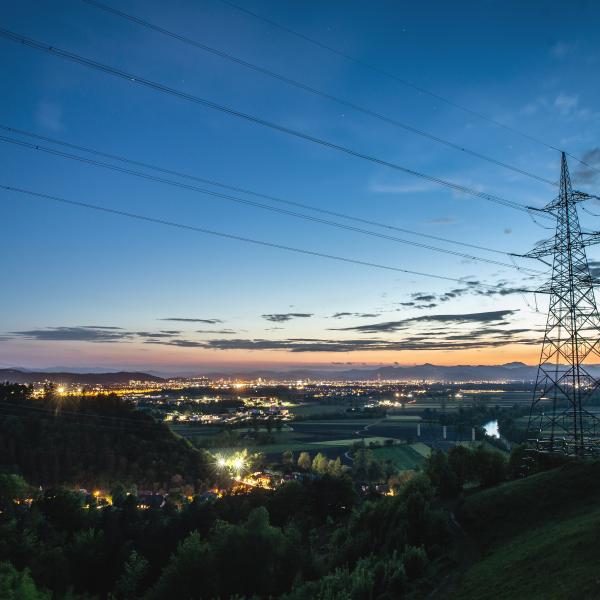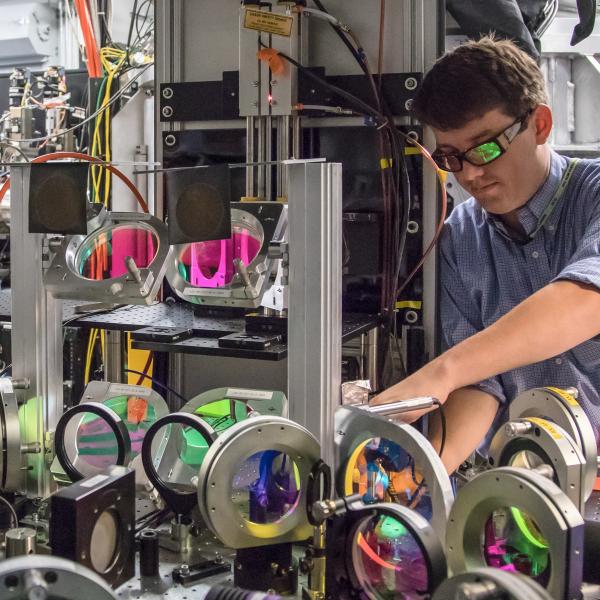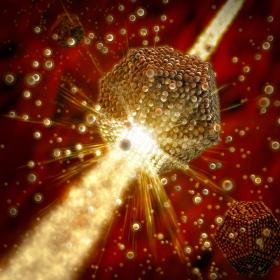Clean energy and sustainability are two of the most urgent challenges of our time, and they demand the development of solutions for a more sustainable future. A key step toward creating that future – one that meets society’s energy needs without depleting limited resources or accelerating climate change – is being able to visualize, understand and tailor natural and industrial processes with atomic precision. That’s the primary goal of SLAC’s energy research.
Researchers at SLAC use an array of advanced tools to study complex energy-related questions, like how individual particles inside of batteries evolve and interact with each other over time.
SLAC’s research spans from improving solar cell performance to making the electric grid more resilient and building quantum materials for future energy technologies. Already, scientists at the lab have found new ways to split water molecules to generate clean hydrogen gas; use 3D printing to manufacture materials with less waste; and extend the range of electric-vehicle batteries while making them safer.
Going forward, researchers from academia and industry will continue to benefit from SLAC’s state-of-the-art, freely available resources, like its new superconducting X-ray free-electron laser and databases of catalyst properties, all of which are meant to bring a sustainable, clean energy future closer.
Materials, chemistry and energy sciences are central to many of today’s most critical technical challenges:
Can we develop membranes to make water desalination more affordable?

What new materials can make electric batteries more powerful and longer lasting?
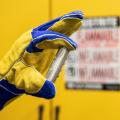
Can we make fuels from solar energy directly, through artificial photosynthesis, or indirectly through biomass or electrochemical processes?

Can we find new catalysts that will enable a more sustainable chemical industry?

Energy and sustainability at SLAC
People working on energy and sustainability across the lab

Public lecture presented by Jocelyn Richardson

Public lecture presented by Sila Kiliccote
The New Grid: 100% Clean Energy for All
Public lecture presented by Sila Kiliccote
SLAC National Accelerator Laboratory

Lecture presented by Yi Cui
Batteries for the Future: What's Possible?
Lecture presented by Yi Cui
SLAC National Accelerator Laboratory
Our scientific facilities
Scientists from universities, laboratories and private companies around the world use our cutting-edge research facilities.
SSRL
Stanford Synchrotron Radiation Lightsource provides extremely bright X-rays that scientists use in a wide range of research to probe matter on the scale of atoms and molecules.
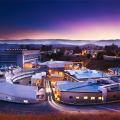
LCLS
Linac Coherent Light Source is the world’s first hard X-ray free-electron laser allowing researchers to make stop-action movies of chemistry in action and explore proteins for new pharmaceuticals.
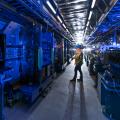
FACET-II
FACET-II provides high-energy electron beams for researching revolutionary particle accelerator technologies that could make future accelerators 100 to 1,000 times smaller and a lot more capable.
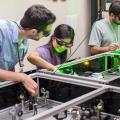
CryoEM
The Stanford-SLAC CryoEM facility gives scientists unprecedented views of the inner workings of cells and of technologies like batteries and solar cells.

For questions or comments, contact the SLAC Office of Communications at communications@slac.stanford.edu.
About SLAC
SLAC National Accelerator Laboratory explores how the universe works at the biggest, smallest and fastest scales and invents powerful tools used by researchers around the globe. As world leaders in ultrafast science and bold explorers of the physics of the universe, we forge new ground in understanding our origins and building a healthier and more sustainable future. Our discovery and innovation help develop new materials and chemical processes and open unprecedented views of the cosmos and life’s most delicate machinery. Building on more than 60 years of visionary research, we help shape the future by advancing areas such as quantum technology, scientific computing and the development of next-generation accelerators.
SLAC is operated by Stanford University for the U.S. Department of Energy’s Office of Science. The Office of Science is the single largest supporter of basic research in the physical sciences in the United States and is working to address some of the most pressing challenges of our time.
